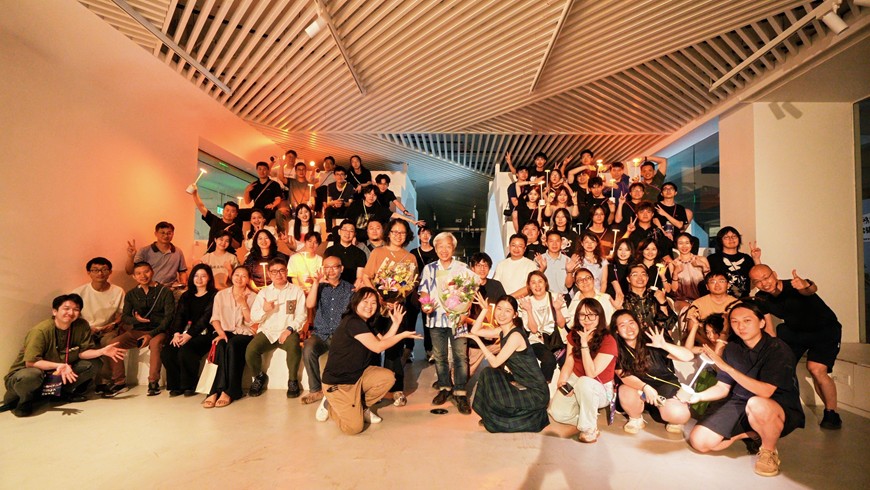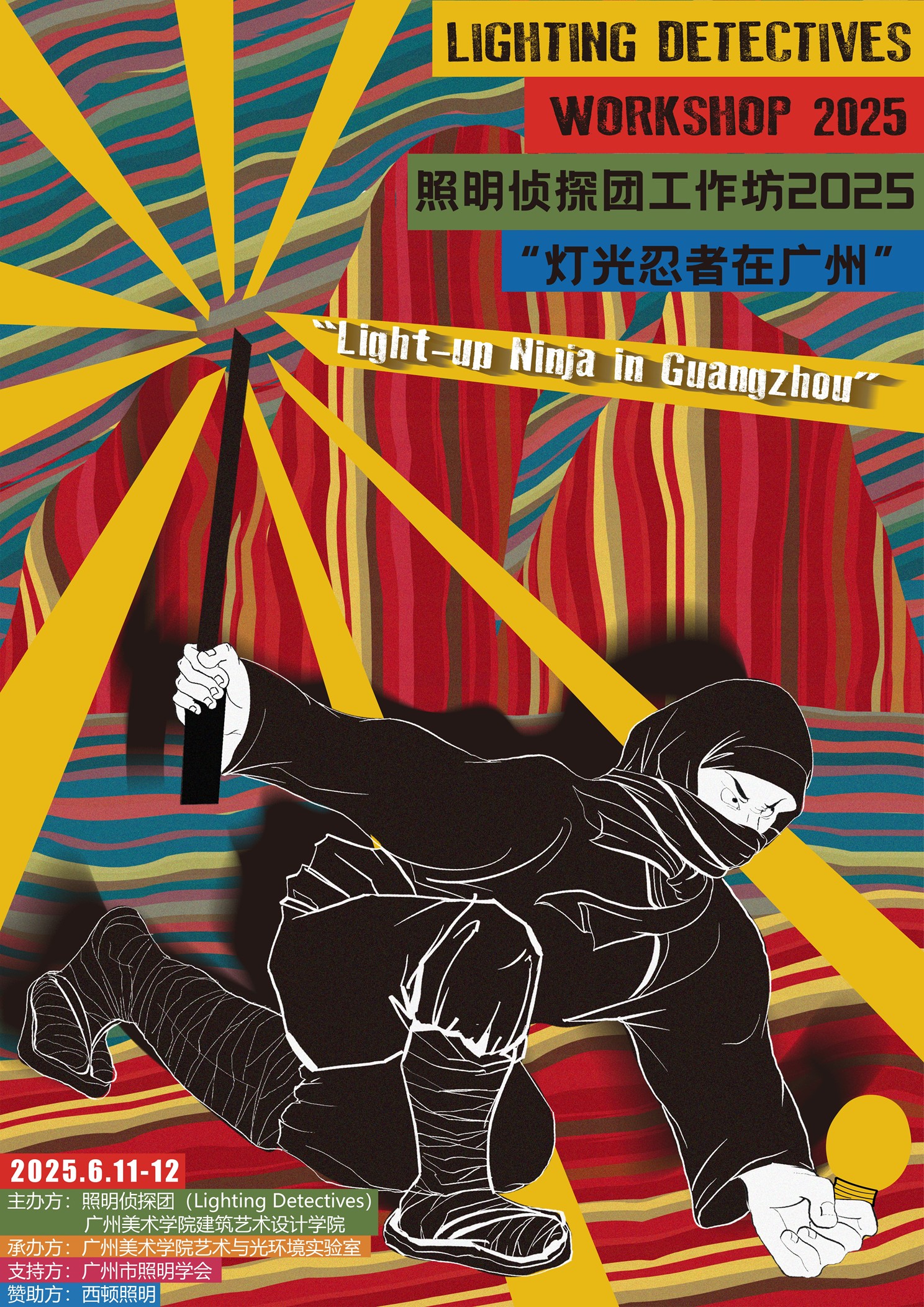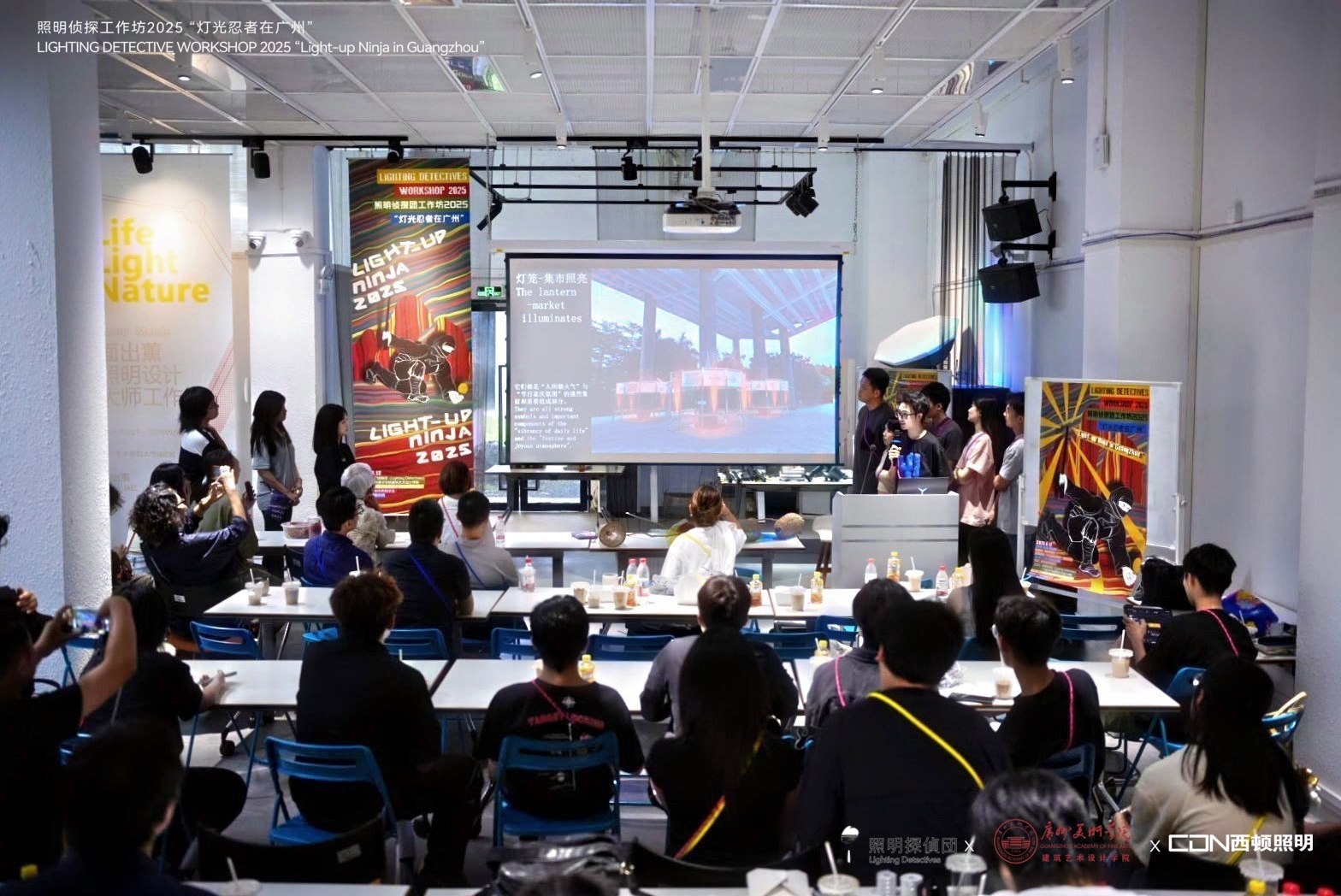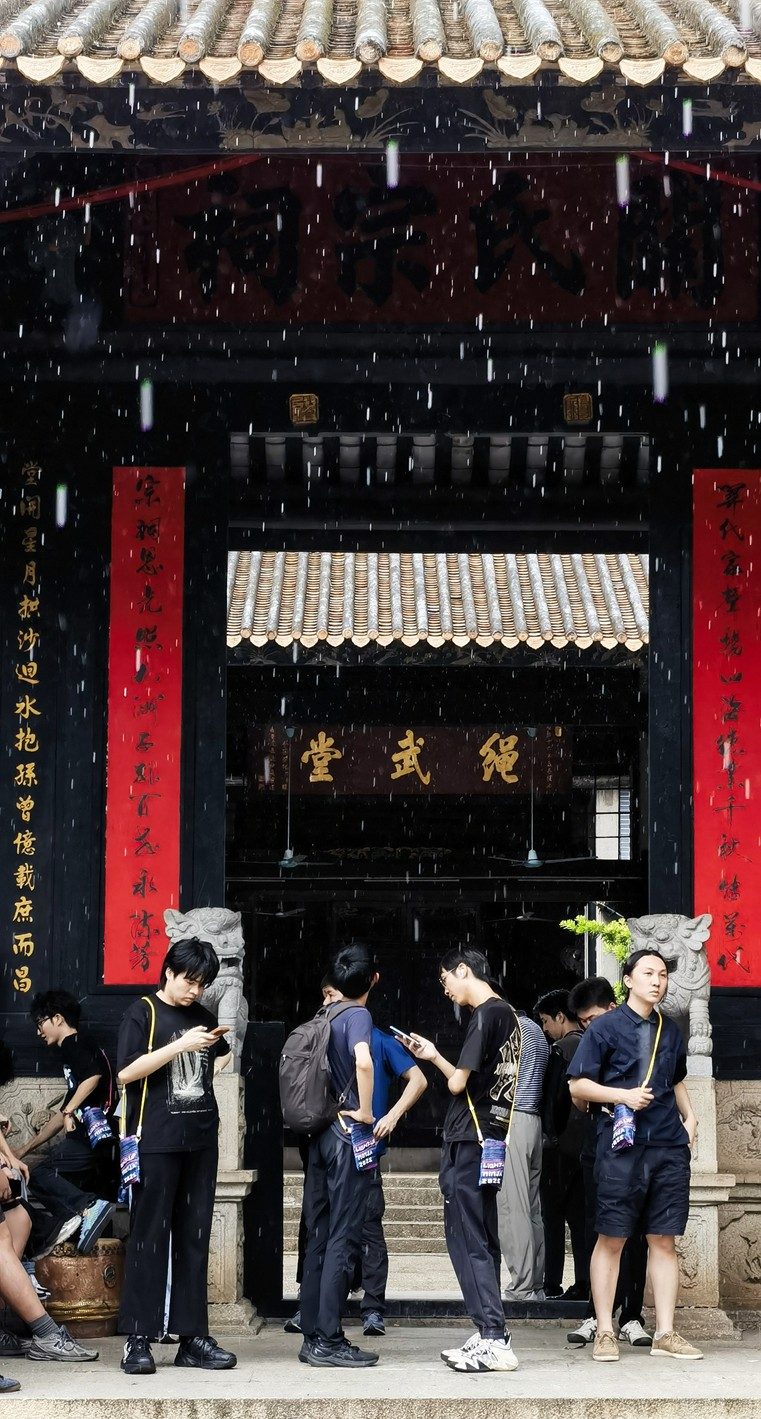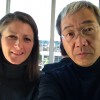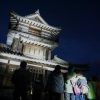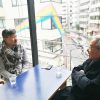First Light-up Ninja in China!
2025.06.11-06.12 Huangyi Lin
Lighting Detectives debuted Light-up Ninja in China (June 2025, Guangzhou). Students created temporary night art with communities, combating light villains through sustainable urban darkness and cultural storytelling.
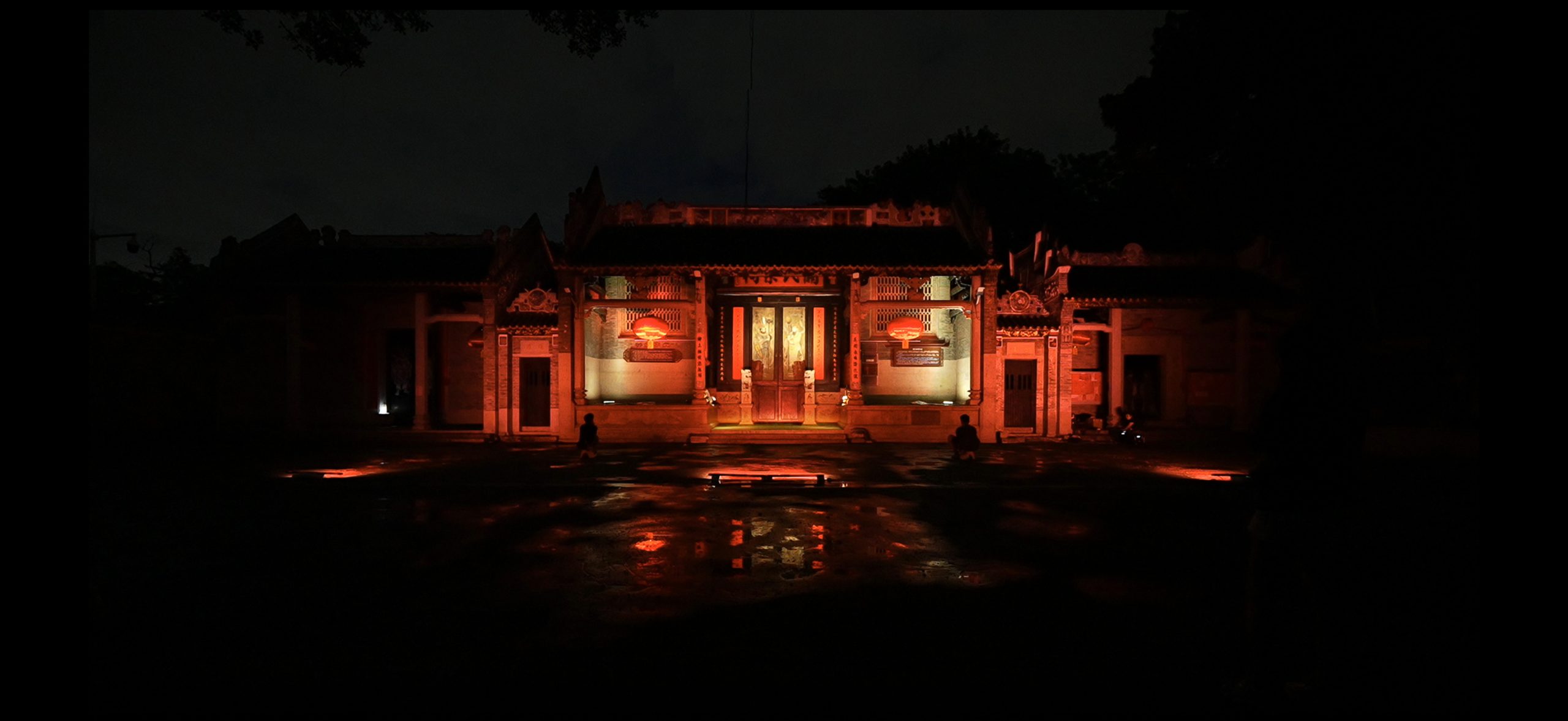
From June 11 to 12, 2025, the “Light up Ninja” flash mob popped up in Nanting Village, Guangzhou University Town—lighting up the night for a moment, then quietly withdrawing.
This was the first-ever ‘Light up Ninja’ event in China. We co-organized it with the Guangzhou Academy of Fine Arts, whose faculty members Prof. Lin Hong, Yang Yiding, and Lu Haifeng were excited to join. The event also received support from the Guangzhou Lighting Society and sponsorship, including technical expertise, from CDN Lighting.
The main purpose of the event was not to light up the monumental kind, often found extravagantly lighting up towers, bridges, or castles. Instead, it involved simple experiments to find appeal in the typical, by illuminating scenes buried in daily life. We wanted students to learn not just about adding light, but also about eliminating unnecessary or unpleasant light to create beauty and comfort in the nightscape closest to us.
■ DAY 1: June 11
Around 30 students, along with LPA and CDN staff and professors, gathered at GAFA’s Art and Light Environment Lab for the opening ceremony. Prof. Lin Hong gave a talk on “Nightscape Lighting for Nocturnal Living,” while Mr. Mende presented “Future of Urban Lighting” and “About Lighting Detectives.” Noriko Higashi then outlined the “Light-up Ninja” event flow.
After a short tea break, participants presented their field surveys and proposal reports. Three student teams—Respect: Ancestral Hall, Confluence: Square, and Float: Ferry—shared their research and design schemes. Mr. Mende expressed strong interest in and endorsement of all three proposals, particularly appreciating their performative approach to creating nighttime scenes. Instructors then offered professional advice to further refine each group’s concept.
Following the proposal presentations, CDN staff provided detailed instruction on equipment usage—including wiring, cable setup, and switch control—and each team proceeded methodically with the construction of their lighting installations.
After nightfall, each group moved to one of three locations in Nanting Village to conduct localized lighting tests. The instructors visited each group in turn to offer guidance and suggestions.


by Mr. Mende
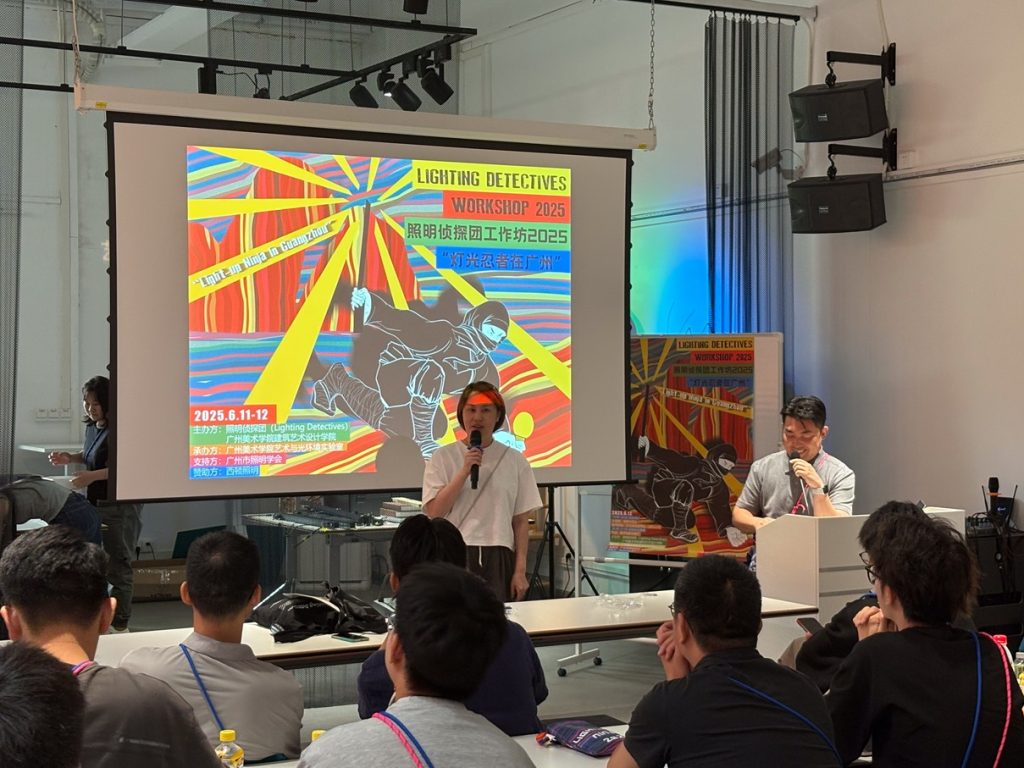
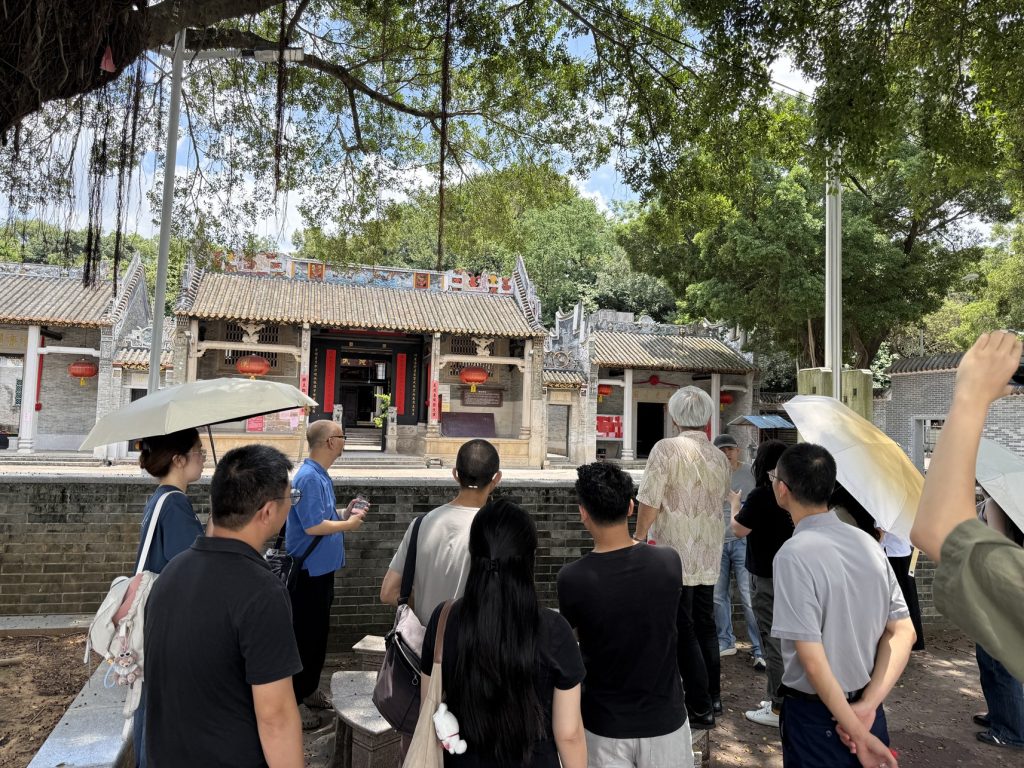
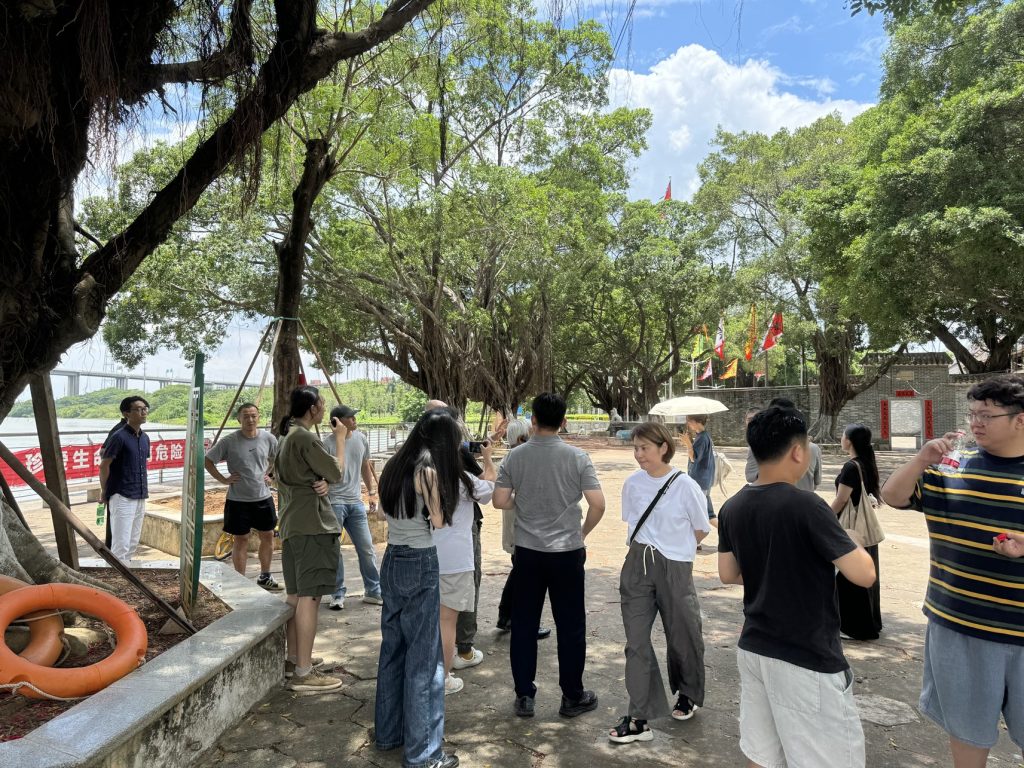
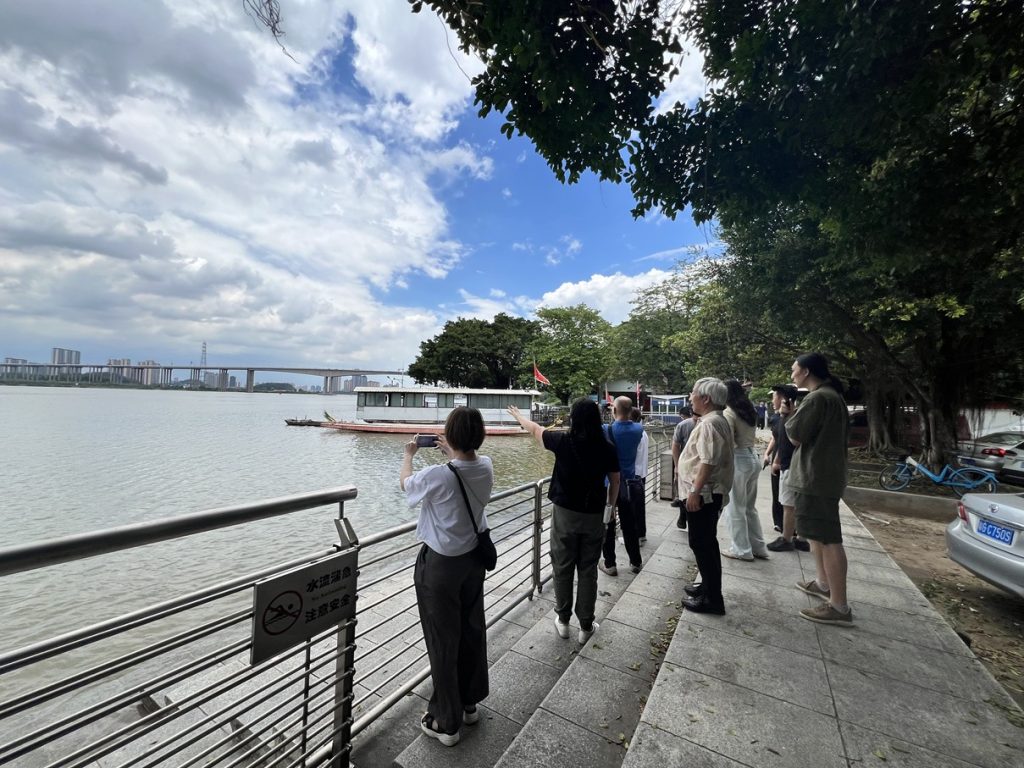
■ DAY 2: June 12
On the day of the flash mob, all workshop participants reconvened at the Light Lab to discuss the upcoming flash lighting activations. Each team systematically reviewed lamp diffuser production, lighting on/off procedures, participant movement logistics, lighting sequence logic, and methods to achieve dynamic storytelling effects—ensuring rigorous planning and precise execution.
On that day, a typhoon passed through the region. As the teams left the Light Lab to head to their sites, heavy rain suddenly began and some members sought a shelter inside the ancestral hall. Fortunately, conditions improved around 5 p.m., around 3 hours later, allowing the “ninjas” to regroup and resume their on-site works. This unexpected weather challenge added another layer of resilience to the project.
That late afternoon, the teams arrived at their designated sites and began final preparations. With CDN’s technical team guiding accurate lamp placement and fine-tuning, stable power supply was ensured. The “ninjas” carefully confirmed lighting positions and movement paths, rehearsing repeatedly to guarantee the flash mob lighting performance unfolded perfectly.
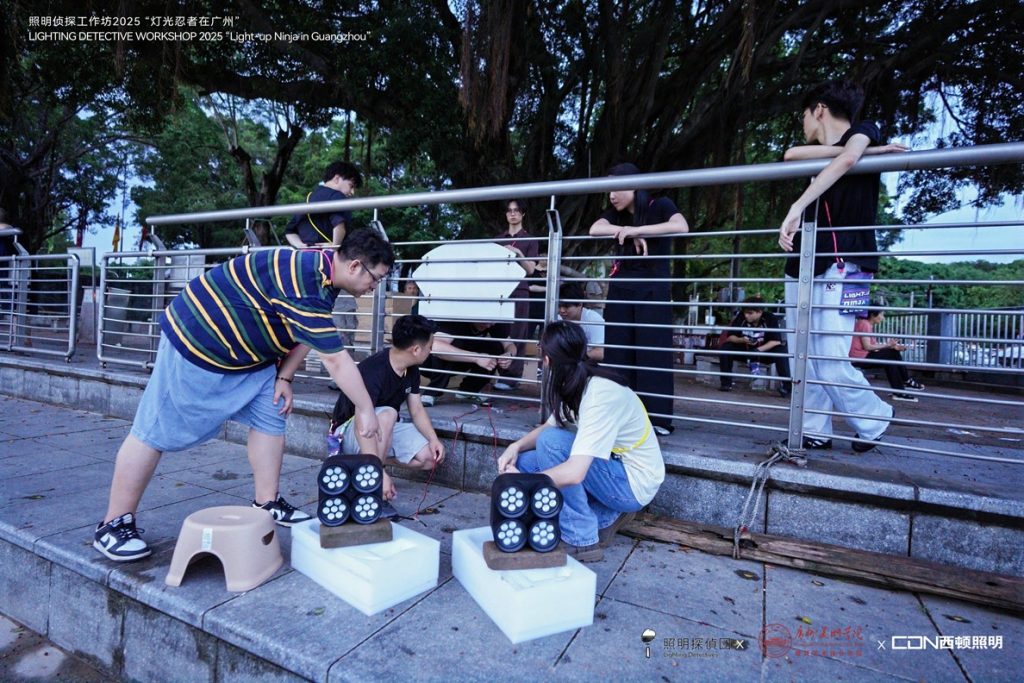

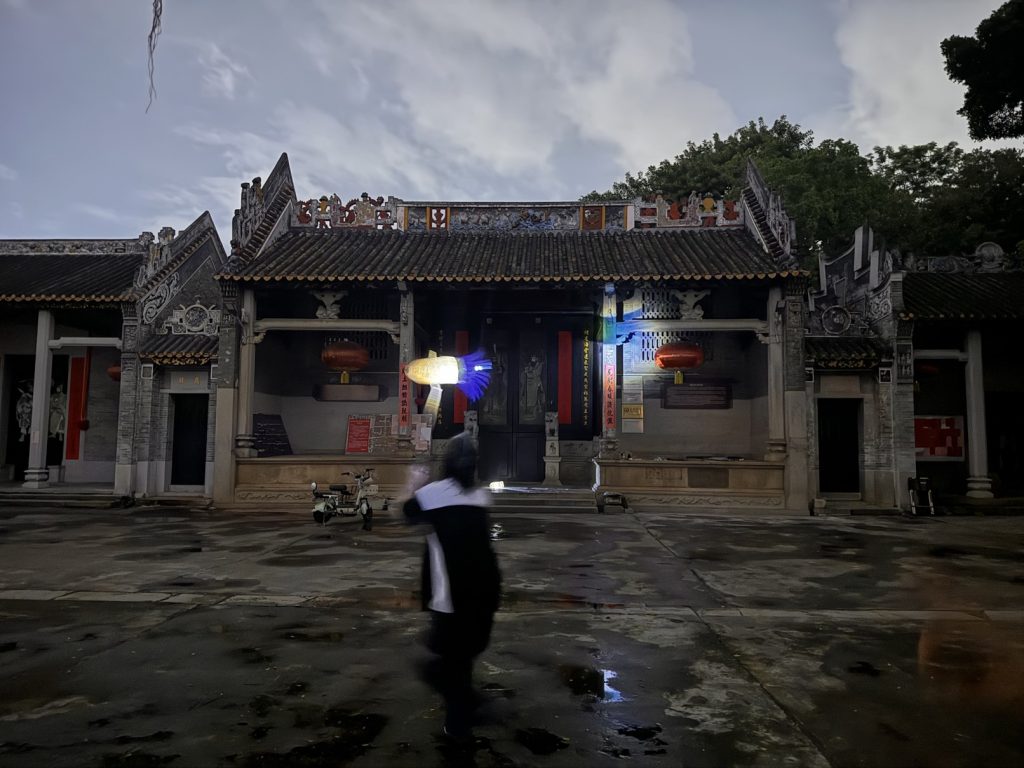
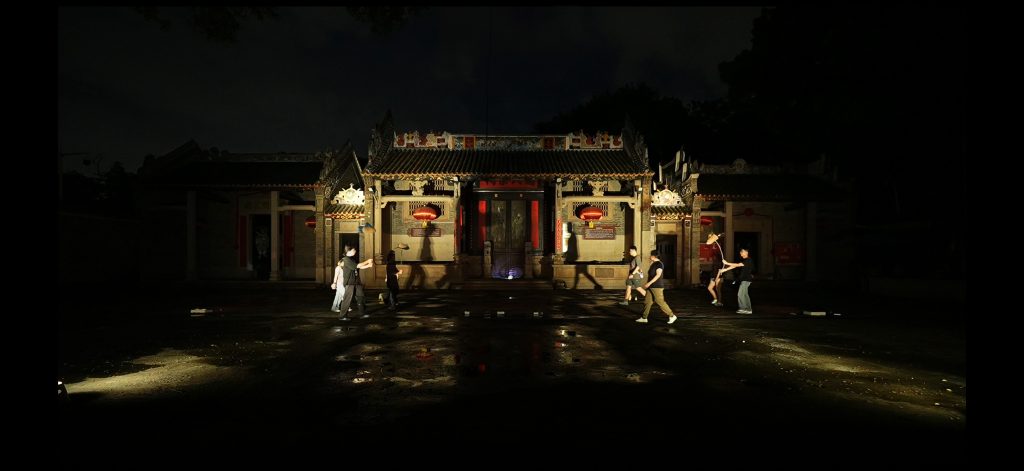
Ancestral Hall
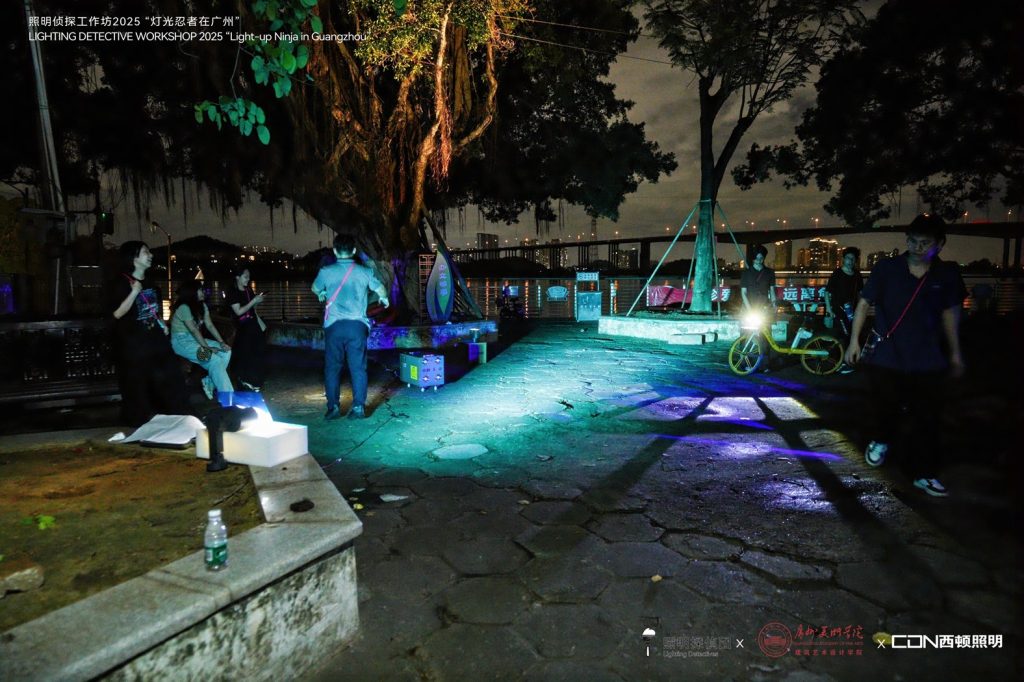
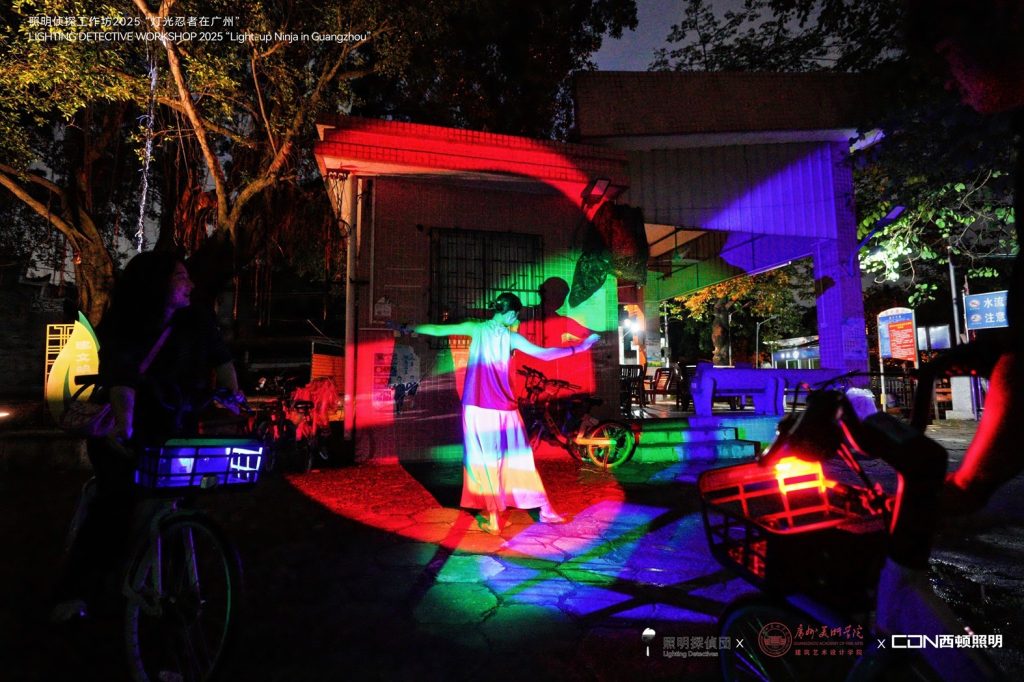
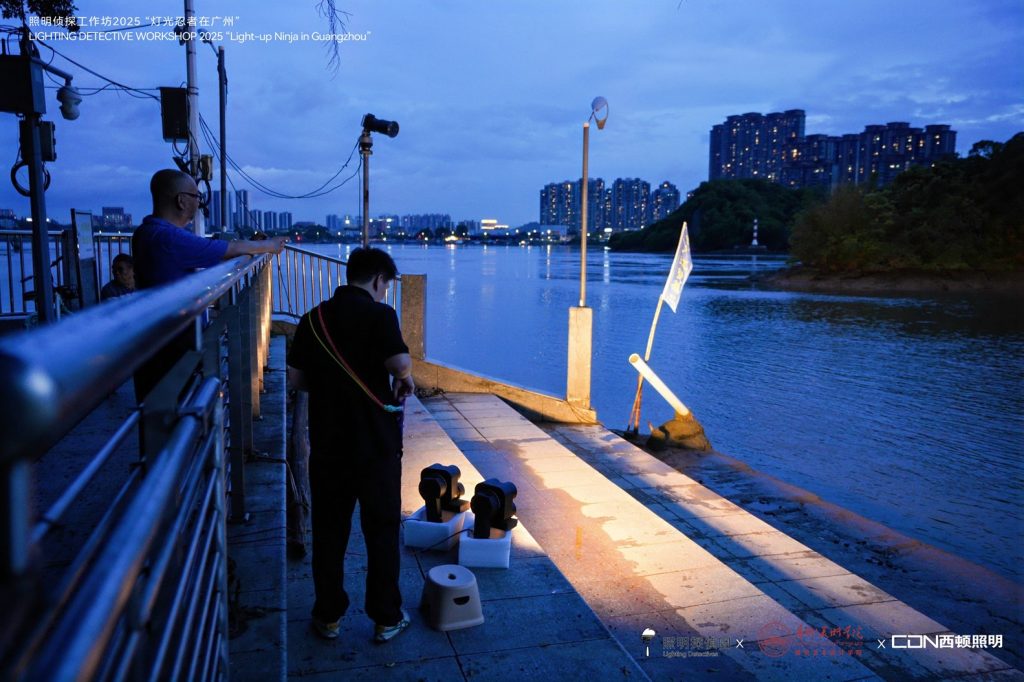
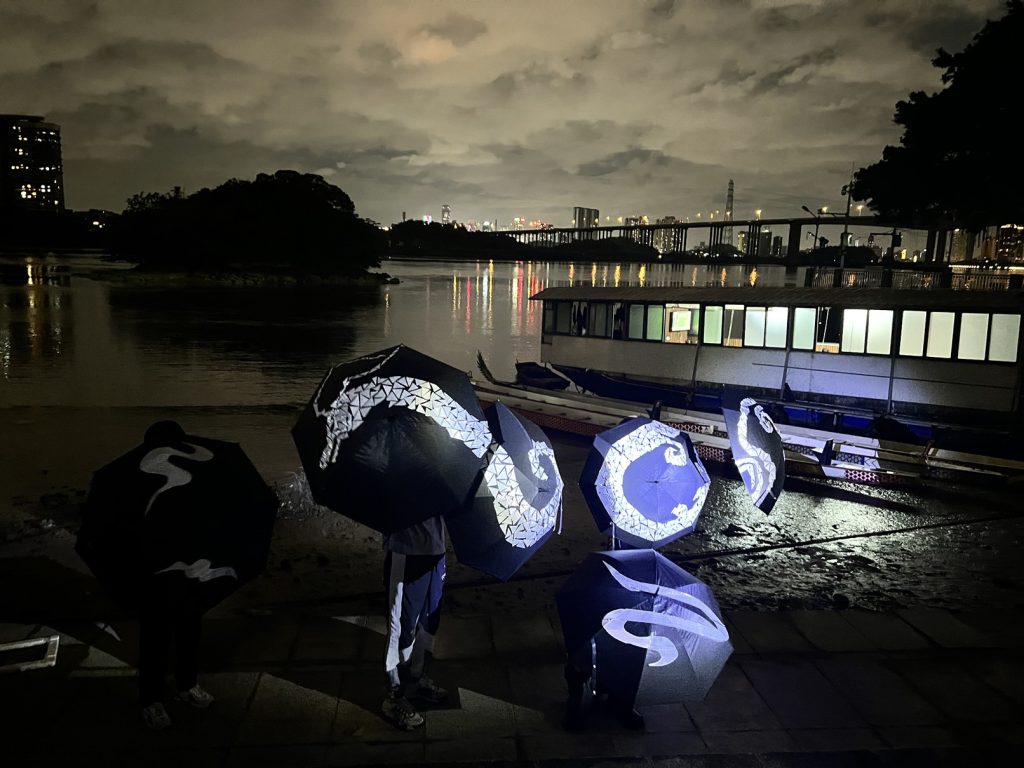
■ Flash Mob Presentations
In the evening, each of the three teams executed their flash presentations according to their respective themes, creating dramatic scenes that embodied the core value of ‘Light up Ninja’—using light to explore and cultivate beauty in the everyday.
◇Team Respect: Ancestral Hall
Through field research at an ancestral hall, a four-act light-and-shadow narrative activated the space:
- “Light On, Fortune Comes”: a red-light “carpet” symbolizing auspiciousness; base lighting highlights plaques and couplets; drumbeats reinforce solemn clan unity through red glow.
- “Bright & Flourishing”: red flashlights overlap with orange floodlights, penetrating lantern’s texture; the warm palette simulates flickering flames, infusing the ritual space with familial vitality.
- “Fish & Fortune”: in near-total darkness, drumbeats pulse like the earth, guiding the floating fish lanterns; flashlights served as tracking lights; bamboo-shadow patterns intertwine rhythmically to evoke ‘fish leaping into the sea of fortune”
- “Thriving Generations”: silence is shattered by four beams of light, revealing a luminous stage; participant silhouettes are projected onto the ancestral hall façade—using light as ink, people as brush—to depict lineage flourishing.

◇Team Confluence: Square
Centering on gathering, this theme sought to rekindle nighttime connections among people in the banyan-tree plaza. Four scenes were designed:
- A vertical cold-white beam illuminates the banyan’s aerial roots, forming a striking column visible from afar.
- Cold-white ground beams define a discrete activity area, creating a “light carpet” for gathering.
- Warm-yellow light from within the tree pit envelops the canopy, establishing a welcoming light zone for psychological comfort.
- The interactive finale: color-changing flashlights placed in shared-bike baskets project dynamic light spots and shadows. Participants can manipulate the light source or reposition the setup to transform shadow shapes—creating playful personal or group experiences, letting “Confluence” emerge through immersive participation.
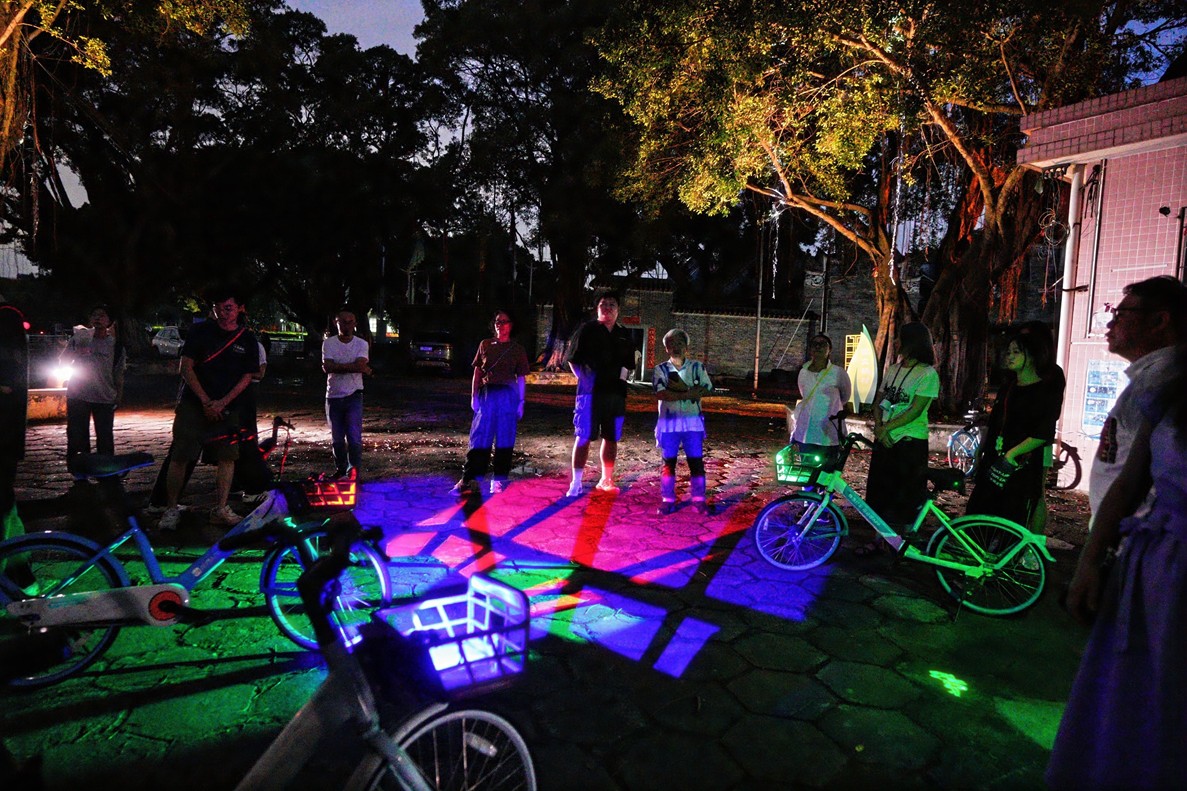
◇Team Float: Ferry
Field research revealed Nanting Pier as a traditional Guangfu dragon-boat rowing site, rich in local culture. Inspired by this heritage and guided by the concept of “learning from natural light,” the team adopted the soft, serene, and subtly mystical glow of natural “moonlight” as their lighting prototype. A narrative unfolded across three stages: “Moonbirth,” “Dragonrise,” and “Dragon Dance.”
- In “Moonbirth,” a moon slowly ascends, casting silvery light on islets and water while awakening a dormant ferry below.
- In “Dragonrise,” the ferry seems to gain life and shed its static form.
- In “Dragon Dance,” it transforms into a dynamic dragon weaving through space.
This three-act sequence entwines local culture, natural-light inspiration, and lighting technology to create an interactive experience between humans and light.
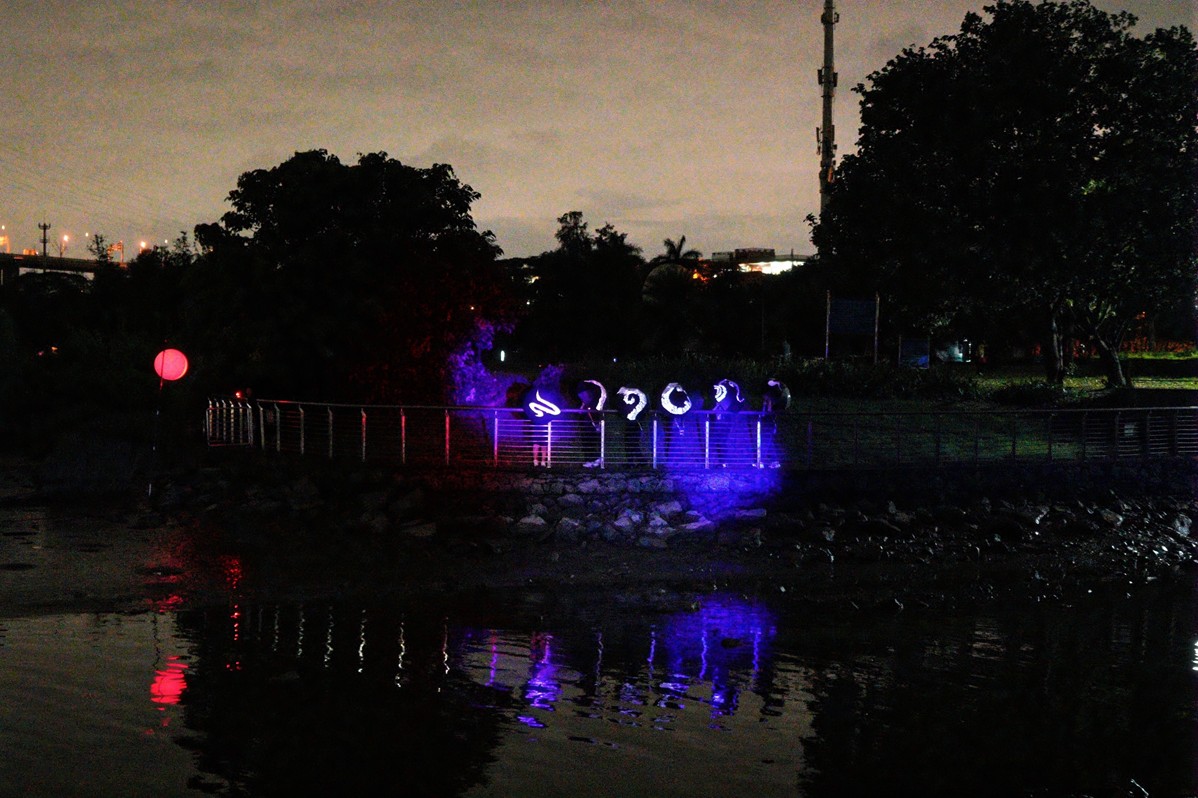
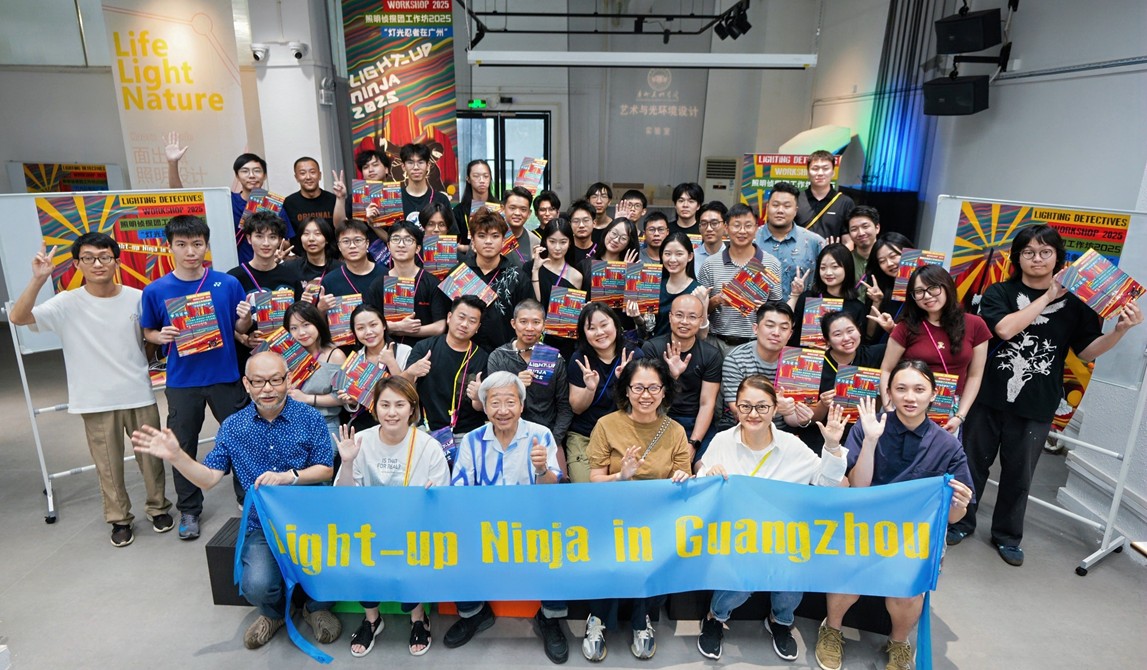
■ Closing Ceremony
After the three teams delivered their spectacular flash presentations, the “Light up Ninja” flash mob workshop reached a memorable conclusion. The participants then gathered in the art museum’s multipurpose hall for a salon and closing ceremony, reviewing the full process and rich outcomes of the workshop. Special guests—including GAFA alumni Liu Meiliang and Hai Mian—performed an exquisite Cantonese opera.
At this point, all participants jointly hosted a warm celebration for Kaoru Mende’s 75th birthday in a traditional Cantonese way, extending heartfelt wishes to the Lighting Detectives’ leader. (Huangyi Lin)
